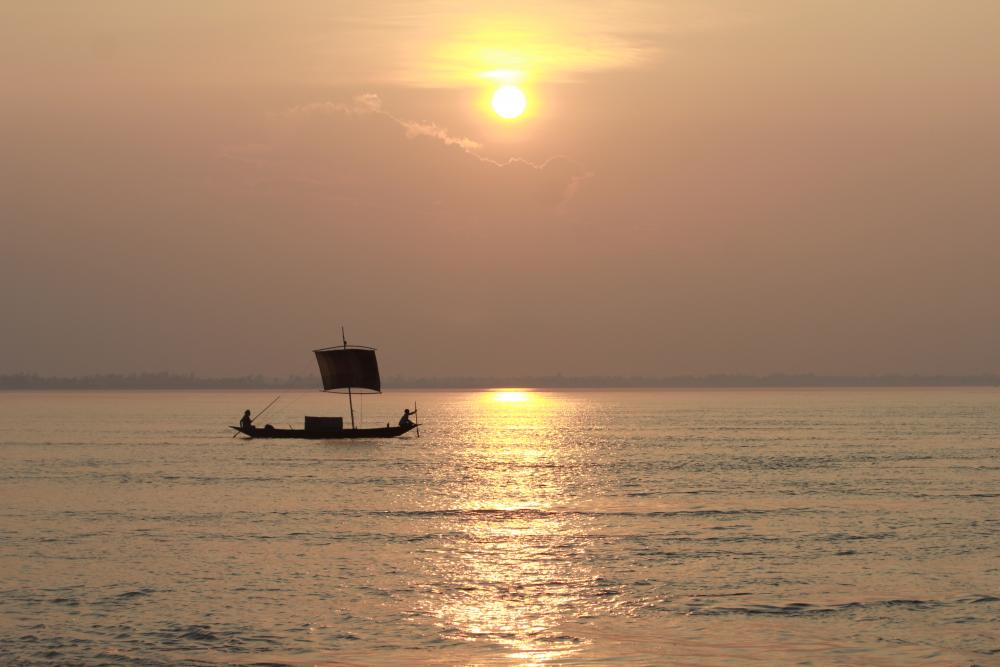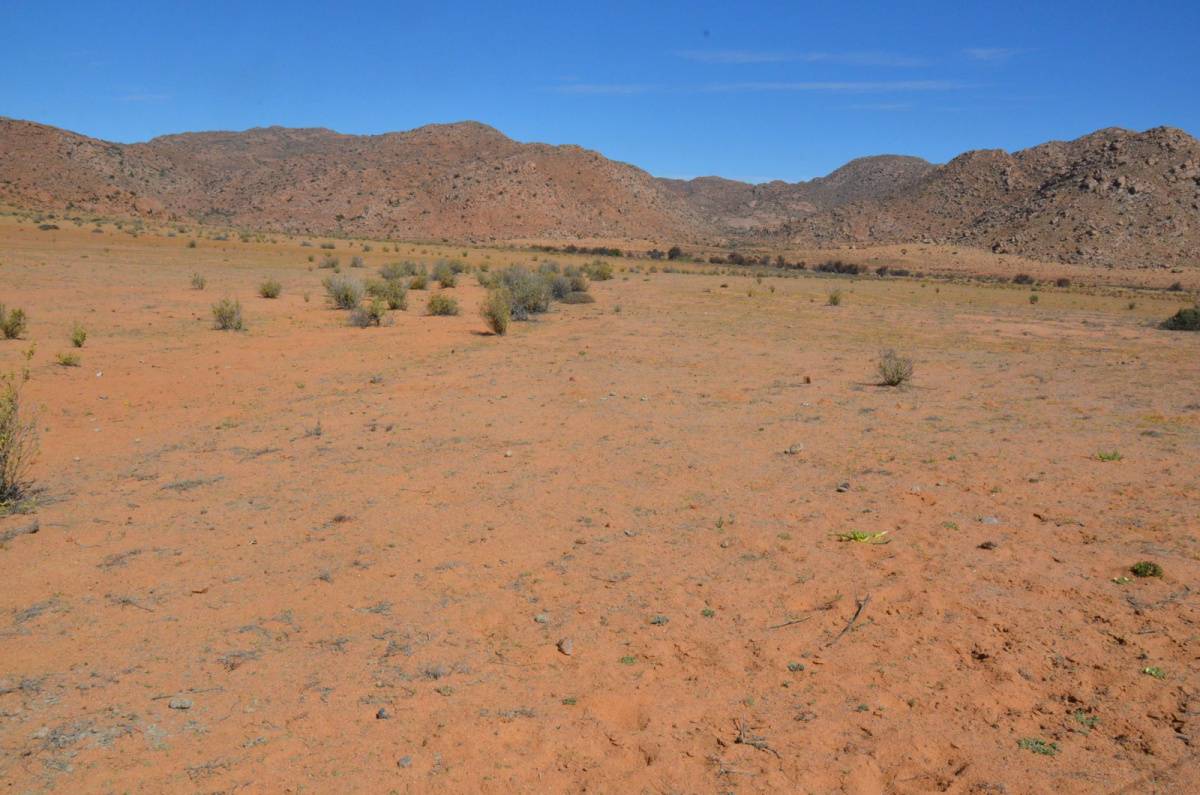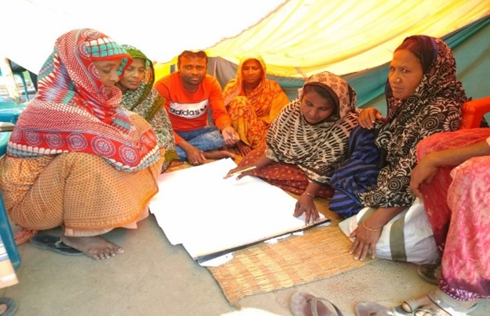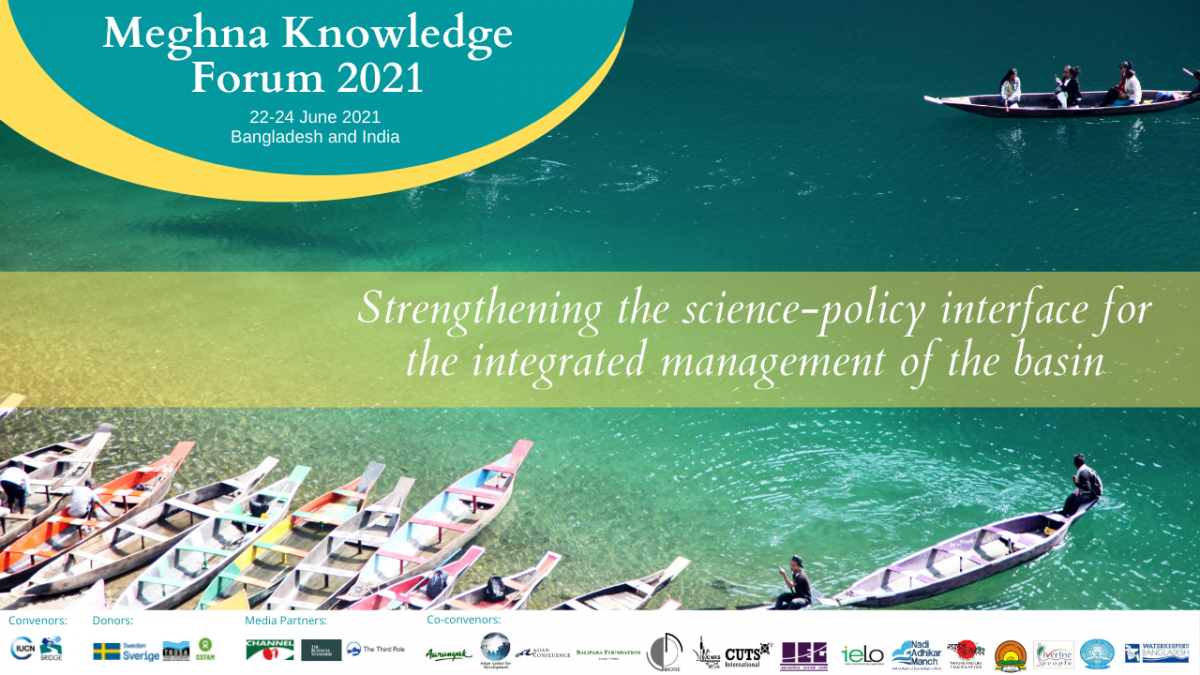World Water Day: IUCN video highlights key success factors for sustainable shared water resources management
A new video on the importance of transboundary cooperation for equitable and sustainable water resources development was launched today by IUCN, on the occasion of World Water Day. Through the perspectives of civil society organisation (CSO) representatives, the “Engaging CSOs, improving water resource management” video looks at what key stakeholders view as key success factors towards effective shared water resources management.

Sunset at the Brahmaputra, a transboundary river that flows through China, Bangladesh and India.
Photo: © IUCN/ AJM Zobaidur Rahman
The video was produced as part of the BRIDGE Ganges-Brahmaputra-Meghna (BRIDGE GBM) project, an initiative launched by IUCN Asia in 2016, and supported by The Asia Foundation, to develop a regional civil society organisation vision for cooperative transboundary water resource management in the Ganges-Brahmaputra-Meghna River Basin shared by Bangladesh, Bhutan, China, India and Nepal.
As the “Engaging CSOs, improving water resource management” video shows, over 620 million people depend on the Ganges-Brahmaputra-Meghna river basin, home to many different rare and endangered fish species, for their survival
Due to high population pressure, climate change-related risks and a lack of shared water resources management practices/frameworks, sustainable water resources management in the region faces many challenges. BRIDGE GBM sets out to tackle these challenges by unifying and facilitating the cooperation of CSOs in the GBM basins to improve their engagement in transboundary water management issues.
The video also highlights a workshop held in November 2016 which brought together CSO representatives from the five GBM countries to discuss various water management technical issues, including existing international legal and institutional frameworks for shared water resources management and the current context for cooperation in the GBM basin.
Through role-playing exercises, participants had the opportunity to negotiate transboundary water management issues in a fictive country scenario by applying concepts and principles learned during technical sessions. They will then use the newly acquired knowledge to develop a joint vision for the sustainable management of the shared waters of the GBM basin.
“By supporting the development of benefit-sharing mechanisms, joint planning, and establishing transboundary water management institutions, IUCN Asia seeks to foster long-term changes on how shared river basins are currently managed and protected. An inclusive and multi-level governance approach, with a focus on engaging CSOs, is central to BRIDGE’s work,” said Raphael Glemet, Senior Programme Officer, Water and wetlands, IUCN Asia.
Regional cooperative frameworks, including those that BRIDGE will help establish, will enable countries to manage their water resources responsibly, in ways that would not have any transboundary impact on other countries.
This year’s theme for World Water Day is “Wastewater”. This is a particularly important theme because functional wastewater management is necessary for the maintenance of water sustainability across the world.
The BRIDGE GBM project falls under the umbrella of the global Building River Dialogue and Governance (BRIDGE) programme, in which IUCN, in partnership with the IUCN Global Water Programme and the IUCN Environmental Law Commission, is implementing in fourteen trans-boundary basins in three regions across the globe. In Asia, the BRIDGE approach focuses on enhancing governance capacities in the GBM and Mekong basins.
The BRIDGE (Building River Dialogue and Governance) project aims to build water governance capacities through learning, demonstration, leadership, and consensus-building in trans-boundary hotspot river basins. Facilitated by IUCN and financed by the Water Diplomacy Programme of the Swiss Agency for Development and Cooperation (SDC), BRIDGE is a multi-regional project, implemented in 14 river basins located in South America, Meso-America, Africa and Asia. In Asia, the BRIDGE project focuses on the 3S Basins (Sekong, Sesan and Sre Pok rivers shared by Cambodia, Vietnam and Lao PDR) as well as the GBM Basin (Ganges-Brahmaputra-Meghna rivers shared by Bangladesh, Bhutan, China, India and Nepal. The BRIDGE GBM project is supported by The Asia Foundation. The projects have provided opportunities for dialogue and training on hydrodiplomacy, and produced data and studies to support technical discussion for stakeholders from different sectors and levels.



